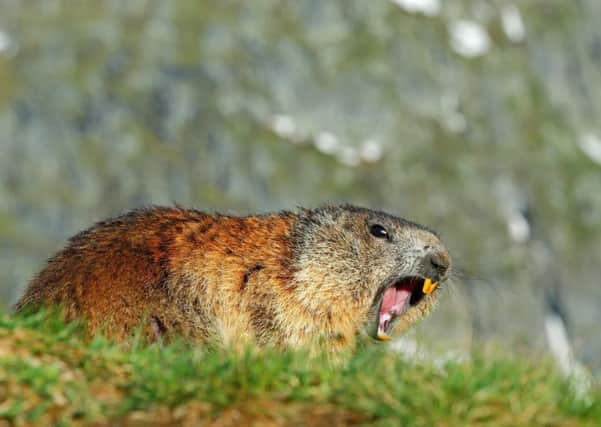What is Groundhog Day?


It’s become a metaphor for repetitive events, referring to the Hollywood film in which Bill Murray is forced to relive the same day over and over again.
But Groundhog Day is a centuries old tradition which has its roots back thousands of years.
Advertisement
Hide AdAdvertisement
Hide AdThe occasion is celebrated in America each year on February 2, the same date as the Christian date of Candlemas, which in turn has pagan roots dating back millennia. Seeing the shadow - or not Tradition has it that on this day, groundhogs come out of their holes after a long winter sleep to look for his shadow.
If he sees it, he regards it as an omen of six more weeks of bad weather and returns to his hole.
If the day is cloudy and, hence, shadowless, he takes it as a sign of spring and stays above ground until it’s time to go to earth again in the winter.
Where does this tradition come from?
In the Christian tradition, February 2 is Candlemas Day - the day Mary was said to have been purified after giving birth to Jesus. In pre-Christian times, it was the festival of light.
Advertisement
Hide AdAdvertisement
Hide AdThis ancient festival marked the mid point of winter, half way between the winter solstice (shortest day) and the spring equinox - so a turning point in terms of the seasons. There is a traditional poem, which goes:
If Candlemas be fair and bright,
Winter, have another flight;
If Candlemas brings clouds and rain,
Go Winter, and come not again.
Going back to the groundhog - if it’s cloudy, there’s no shadow, which is supposed to mean spring is here.
But how did this end up being Groundhog Day?
According to the Punxsutawney Groundhog Club (guardians of Punxsutawney, the rodent who appears in the film with Bill Murray), it was the Romans that set the tradition on its journey to America.
The Roman legions supposedly took the notion of February 2 being a day to predict the arrival of spring to the Germanic tribes of Northern Europe.
Advertisement
Hide AdAdvertisement
Hide AdThese early Germans concluded that if the sun made an appearance on that day, an animal, the hedgehog, would cast a shadow - thus predicting six more weeks of bad weather.
Fast-forward to the 18th Century when the earliest settlers to Pennsylvania were Germans, who adopted the native groundhog in place of the European hedgehog.
Groundhog Day: Half your hay
Farmers in New England knew that we were not close to the end of winter, no matter how cloudy February 2nd was, and if they didn’t have half their hay remaining, there may be lean times for the cows before spring brought fresh grass.
Hollywood fame
The largest Groundhog Day celebration is held every year in Punxsutawney, Pennsylvania, where crowds as large as 40,000 have gathered to celebrate the holiday since at least 1886.
Advertisement
Hide AdAdvertisement
Hide AdThe popularity of the occasion saw the town’s tradition and prognosticating rodent Punxsutawney Phil feature in the film Groundhog Day in 1993, which tells the story of a TV weatherman played by Bill Murray who is doomed to live February 2 over and over again until he grows as a person.
This, in turn, has led to the phrase Groundhog Day as describing an unpleasant situation which seems to repeat over and over again.